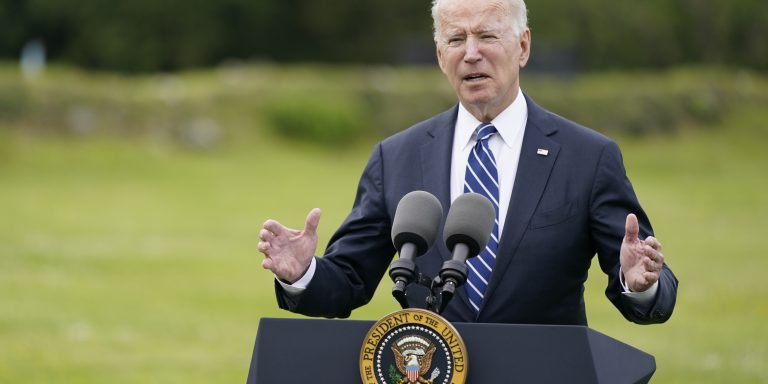
The Biden administration released its strategy to counter domestic terrorism, detailing how the U.S. government plans to respond to the growing threat.
The strategy, the first of its kind, is comprised of four main pillars that each focus on a different aspect of the domestic terrorism threat.
While the Biden administration’s sense of urgency in combating domestic terrorism is laudable, the challenges are dire, and success is far from guaranteed.
As other issues take precedence on the policy agenda, it remains critical that the Administration works continuously to measure and assess its progress.
On June 14, 2021, the Biden administration released its strategy to counter domestic terrorism, laying out a blueprint for how the U.S. government plans to respond to the growing threat posed by terrorists and violent extremists operating on U.S. soil. Spurred by the January 6 Capitol Insurrection, the Biden administration seems earnest in its desire to tackle the challenge. The strategy, the first of its kind, is comprised of four main pillars that each focus on a different aspect of the domestic terrorism threat, and contains language familiar to anyone working on counterterrorism-related issues. By developing a formal strategy, the Biden administration can tie the strategy directly to the resources needed to achieve it. This is part of the operational interagency process in the U.S. government. which can help posture law enforcement in a manner that is proactive, rather than purely reactive. It also addresses the issue of rooting out extremism from the ranks of the military, law enforcement, and U.S. government more broadly.
The first pillar is focused on understanding and sharing domestic terrorism-related information. While this step might seem relatively simple and straightforward, it is crucial not to underestimate the importance of being able to identify the threat. Local law enforcement is considered an indispensable component of this strategy, as local police officers and sheriff departments often have the most intimate familiarity with domestic terrorism actors. As part of this pillar, the U.S. State Department will assess whether foreign entities linked to domestic terrorism can be designated as foreign terrorist organizations (FTOs) or Specially Designated Global Terrorists (SDGTs) under the relevant statutory criteria.
The second pillar relates to prevention, specifically stopping recruitment and mobilization to violence among domestic terrorist actors. This pillar stresses the importance of information sharing, including with Silicon Valley, and the need to think creatively about issues such as digital literacy and building resilience in local communities.
The third pillar of the strategy is focused on disrupting and deterring domestic terrorist activity before it has a chance to metastasize. Per the strategy, this means having the Department of Justice “closely examine” the need for new legislative authorities to manage the threat, while ensuring the protection of civil liberties. The American public deserves transparency on this issue and the Biden administration should push for public hearings on Capitol Hill where domestic terrorism experts are asked to explain the pros and cons of any new legislation and how, if passed, it would aid in the fight against domestic terrorism.
The fourth and final pillar takes a long view and seeks to address issues that contribute to domestic terrorism, like polarization, which is fueled by disinformation and the proliferation of conspiracy theories, epitomized by the rise of QAnon and other extremist actors. As acknowledged by the Federal Bureau of Investigation (FBI) just recently, and by the Soufan Center in a report on QAnon published in April, QAnon adherents will continue to pose a violent extremist and domestic terrorism threat to the United States for the foreseeable future. To make progress combating disinformation, the U.S. government will need to engage in robust and continuous dialogue with social media and tech companies, in addition to other aspects of the private sector and civil society.
The Trump administration did make some admirable strides on far-right extremism, including designating the Russian Imperial Movement (RIM) as a SDGT and referencing the threat posed by neo-Nazi organizations, especially those with transnational linkages, in its 2018 National Strategy for Counterterrorism. But more often than not, its actions served to instigate, inflame and at times encourage violent extremists, rather than seek to mollify or ameliorate domestic tensions. The Biden administration is seeking to undo much of the damage wrought by the previous administration’s repeated failures to condemn violent extremism and domestic terrorism in all its forms. And while it is refreshing to see the sense of urgency within the Administration in devoting resources and manpower to the threat posed by domestic terrorism, the challenges are dire. Among the most prominent is how to deal with militia groups like the Oath Keepers and Three Percenters. For groups and organizations motivated in large part by the Second Amendment, any efforts at introducing gun control legislation, however modest, are likely to be met with significant pushback by militias.
The strategy is a step in the right direction, but the impact is far from guaranteed. As other issues take precedence on the policy agenda, it remains critical that the Administration follows through on its strategy and continuously works to measure and assess its progress.
